About the Author
Dr. Moheimani is a Board Certified Practicing Surgeon in Southern California. He has had long-standing interest in the management and treatment of spinal disorders and spinal pain. He has held previous clinical teaching appointments at Loma Linda University and University of Southern California. He has served in the past as Chief of Orthopaedic Surgery for Kaiser Permanente. He is actively involved in the management of college and professional athletes as well as weekend warriors. All references cited in this article are available upon request from the author.
SPINAL INJURIES FOLLOWING MOTOR VEHICLE ACCIDENTS
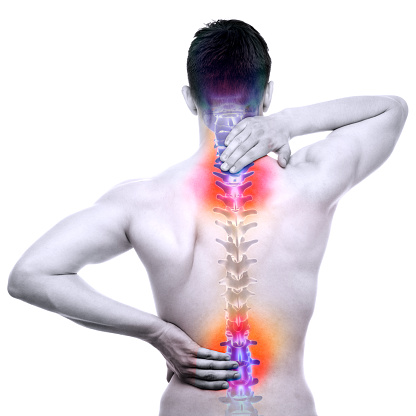 It is well-known that trauma, whether it be from a motor vehicle accident, a slip and fall incident, a sport injury or a work injury, can cause onset of neck and back pain requiring treatment. The severity of the injury and the need for subsequent treatment varies greatly with individuals. An extreme example is demonstrated in an article in the Spine Journal in November of 2009. A 31-year-old woman did have a history of prior disc problem at L5-S1 requiring treatment. However, shortly after a motor vehicle accident, she presented to the emergency room with loss of bowel and bladder control requiring emergency surgery. MRI following the vehicular accident demonstrated that the disc herniation had extruded with significant compression of the neural elements, leading to acute loss of bowel and bladder function. In this scenario where there is a preexisting MRI, there is little to dispute regarding the causation of the massive disc herniation following the vehicular accident requiring surgery. However, it is well-known that individuals will have disc herniations and may be asymptomatic. This is frequently used as an argument to avoid paying for treatment of someone who is injured.
It is well-known that trauma, whether it be from a motor vehicle accident, a slip and fall incident, a sport injury or a work injury, can cause onset of neck and back pain requiring treatment. The severity of the injury and the need for subsequent treatment varies greatly with individuals. An extreme example is demonstrated in an article in the Spine Journal in November of 2009. A 31-year-old woman did have a history of prior disc problem at L5-S1 requiring treatment. However, shortly after a motor vehicle accident, she presented to the emergency room with loss of bowel and bladder control requiring emergency surgery. MRI following the vehicular accident demonstrated that the disc herniation had extruded with significant compression of the neural elements, leading to acute loss of bowel and bladder function. In this scenario where there is a preexisting MRI, there is little to dispute regarding the causation of the massive disc herniation following the vehicular accident requiring surgery. However, it is well-known that individuals will have disc herniations and may be asymptomatic. This is frequently used as an argument to avoid paying for treatment of someone who is injured.
It is known that in the adult population of those who do not have disabling lower back pain, the incidence of disc herniation and disc degeneration is between 28% to 85%. The percentage of abnormality increases with age. This will sometimes falsely lead individuals to argue that the disc herniation is not the source of pain as it may have been preexisting. However, scientific studies dispute this finding. A study by Paajnen showed that in 20-year-old military recruits, there were 57% incidence of MRI abnormalities in those with back pain and 35% incidence in those without. In another study, only 15% of asymptomatic individuals had disc herniations compared to a similar group of symptomatic individuals where they had 42% abnormality. In a surgical group, neural compromise was present in only 4% of asymptomatic subjects compared to 54% of symptomatic subjects. Therefore, one can conclude that although MRI may be abnormal in asymptomatic individuals, it is much more likely to be highly abnormal in individuals having symptoms. Neural compromise is much more commonly seen in individuals requiring interventional treatment such as epidural injections or surgery.
It is also sometimes argued by so-called experts that disc herniations must have preexisting disc degeneration. However, the article in the Bone & Joint Journal of August of 2013 disputes this finding, indicating that there is no scientific validity to the argument that the disc must have been degenerated before it could herniate. Therefore, previously, a normal disc can herniate and may not necessarily have preexisting disc degeneration according to this scientific study.
It is well-known that discs fail and herniate with axial compression or compression and torsion. This is the same mechanism that occurs in spinal fractures following motor vehicle accidents. The publication in May of 2013 on Accident Analysis and Prevention, in fact, indicates that with increase use of seatbelts and new airbag technologies, there has been a decrease in severe spinal fractures, but an actual overall increase in the total numbers of spinal fractures. Data shows that an axial load is transmitted from the pelvis into the seat pans of the front crashes causing these types of burst fractures and compression fractures. Forces great enough to cause spinal fractures can similarly lead to disc herniations or disc injuries with onset of pain and subsequent disability.
Scientific data shows that the impact does not have to be significant to cause a spinal injury. The article on whiplash injury published in the Bone & Joint Journal on June 30, 2009, states that “it has been recognized that the disability from whiplash is associated less with tire skid marks or the degree of vehicle damage than the effect of differential velocity on the head and upper torso.” In fact, it points out that 90% of whiplash injuries occur with speeds less than 14 mph. Furthermore, it points to the fact that summary of literature on crash test on human subjects concluded that a velocity of 2.5 mph was sufficient to cause symptoms. A speed of 8.7 mph was required to cause actual damage to the vehicle. They observed neck pain in volunteers being involved in vehicular accidents at 5 mph only. They point to, not only symptoms of neck pain and stiffness, but also secondary effects including forgetfulness, post trauma disorder, and driving anxiety. Depressive symptoms can occur after six weeks. They also point to the argument proposed by defense advocates that the claimant’s symptoms will disappear once litigation has resolved. However, they point to multiple studies in the literature that showed evidence to the contrary indicating ongoing symptoms well after the case is settled.
An article in Archives of Physical Medicine Rehabilitation from March of 2014 points to a study in Canada showing symptoms of individuals following a motor accident suffering from symptoms of a mild traumatic brain, including sleep disruption, tiredness, dizziness, forgetfulness, vision problems, hearing problems, headaches, neck pain, and mid back pain. 75% were experiencing this after six weeks. Although the incident decreased over the course of the year, many continued to be symptomatic and were seeking continuation of treatment. They were going to multiple providers to treat their symptoms. Another study points to the prevalence of worsening symptoms in older individuals being involved in motor vehicle accidents. In these older individuals, many times studies revealed disc degeneration and disc herniations, which are sometimes attributed to aging. However, it is forgotten that these individuals are much more prone to injury and have lingering pain. In one study of 161 participants, 72% had moderate to severe pain initially in the emergency room. They demonstrated that a large number had continued loss of function and disability well after the accident.
In addition, it is noted that not all individuals react the same way following a disc injury. Why does an individual with a 2 to 3 mm disc herniation complain of severe back and radicular pain and yet someone with a 6 mm disc herniation does not have significant pain? We are now gaining greater understanding of biological issues that contribute to back pain. A study by Kang et. al published in the Spine journal reflects that individuals who had symptomatic disc herniations had increased levels of nitric oxide, prostaglandin E2, and interleukin-6. Therefore, it is being increasingly understood that there are chemical mediators of pain, which are not really measured on MRI scans or other studies. The textbook on interventional spine points to the following: “Mechanically compressive disc protrusions are not the only causes of radicular pain. For this reason, chemical markers from the disc have been implicated in the inflammatory response.” They point to higher concentrations of prostaglandin E2 being found in individuals with positive straight leg raising tests. They also point to the fact that matrix metalloproteinases, nitric oxide, IL-6, and prostaglandin E2 have been implicated in intervertebral disc protrusions. This chemical reaction, which irritates nerves and causes pain, is released post accident. The chemical reaction may be a good explanation as to why epidural injections, which reduce an inflammatory response, are highly successful. As we point out to patients, epidurals do not reduce the size of disc herniation, but, frequently, an individual may have complete resolution of his or her symptoms following the procedure.
In summary, the severity of pain and disability following vehicular accidents are frequently discounted by interested individuals using explanations by biomechanical engineers and recruited “expert” physicians. However, the scientific literature points otherwise. These so-called “experts” frequently point to the fact that many individuals who are pain-free also have disc herniation. However, as I have pointed out, clearly, there is a much higher level of MRI abnormality in symptomatic individuals than non-symptomatic individuals. We know that vehicular accidents can cause severe injuries, including fractures, dislocations, and paralysis. However, it is also known that even impacts at much lower speeds can cause onset of neck and lower back pain. This has been established in even volunteer test individuals. As I have discussed, studies demonstrate that the extent of vehicular damage does not always explain the severity of neck and back pain. Multiple studies also point to the fact that individuals have ongoing chronic pain and disability more commonly seen in older individuals and this disability persists well after their case is settled. We are also now gaining further insight into the biological basis of spinal pain and know that a disc when injured can cause release of irritating chemicals from the disc, which cause pain and disability. These chemicals are not noted on MRI scans or physical examinations performed by independent medical examiners. Levels of these chemicals have been noted to be elevated in individuals having pain and radiculopathy. However, the understanding of the chemical mediators of pain has caused us to develop new technologies, advancing from epidural steroid injections to platelet rich plasma injections and stem cell therapy. There is emerging hope to treat the pain and disability of these individuals suffering consequences of vehicular accidents and other types of spinal injuries.

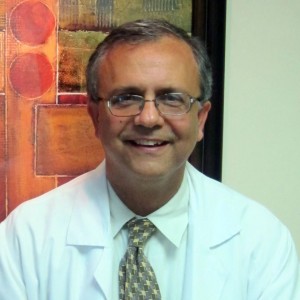
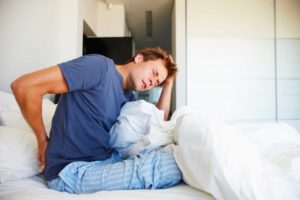 If you suffer from back pain, you are not alone. Back pain is the most common reason for physician visits in the United States. Living with severe pain can not only interfere with your quality of life, it can interfere with your ability to work and enjoy time doing the physical activities you love the most. Spinal cord stimulation is a proven therapy that offers a treatment option for chronic pain. It is most commonly used to treat low back and leg pain. Spinal cord stimulation uses electrical pulses to interrupt pain signals, resulting in pain relief. Many people with chronic low back and leg pain have received relief with spinal cord stimulation. A common side effect of spinal cord stimulation is tingling or buzzing sensation known as paresthesia. Coast Spine & Sports Medicine now provides HF10 therapy for spinal cord stimulation which does not cause paresthesia and allows the patient to focus solely on pain relief. To learn more about HF10 therapy or schedule a consultation, please contact 888-826-1660.Follow us on social media:
If you suffer from back pain, you are not alone. Back pain is the most common reason for physician visits in the United States. Living with severe pain can not only interfere with your quality of life, it can interfere with your ability to work and enjoy time doing the physical activities you love the most. Spinal cord stimulation is a proven therapy that offers a treatment option for chronic pain. It is most commonly used to treat low back and leg pain. Spinal cord stimulation uses electrical pulses to interrupt pain signals, resulting in pain relief. Many people with chronic low back and leg pain have received relief with spinal cord stimulation. A common side effect of spinal cord stimulation is tingling or buzzing sensation known as paresthesia. Coast Spine & Sports Medicine now provides HF10 therapy for spinal cord stimulation which does not cause paresthesia and allows the patient to focus solely on pain relief. To learn more about HF10 therapy or schedule a consultation, please contact 888-826-1660.Follow us on social media: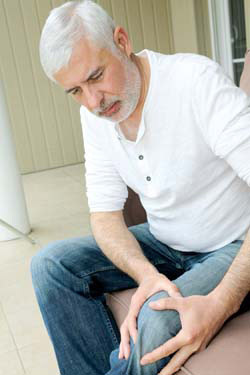 Arthritis is a debilitating chronic pain condition that affects millions of baby boomers around the world. Research shows that the progression of osteoarthritis may be prevented with alpha-2-macroglobulin. What is A-2-M? Alpha-2-macroglobulin protein found in your own blood that prevents the breakdown of the cartilage which leads to further progression of arthritis. In an osteoarthritic joint it is not able to counteract the further breakdown of the tissue. Coast Spine & Sports Medicine directly injects A2M into your arthritic joint. It is expected to be the first treatment for osteoarthritis that can inhibit all causes of cartilage breakdown, reduce pain, and stop the progression of arthritis. To learn more about A2M or schedule a consultation, please contact 888-826-1660.Follow us on social media:
Arthritis is a debilitating chronic pain condition that affects millions of baby boomers around the world. Research shows that the progression of osteoarthritis may be prevented with alpha-2-macroglobulin. What is A-2-M? Alpha-2-macroglobulin protein found in your own blood that prevents the breakdown of the cartilage which leads to further progression of arthritis. In an osteoarthritic joint it is not able to counteract the further breakdown of the tissue. Coast Spine & Sports Medicine directly injects A2M into your arthritic joint. It is expected to be the first treatment for osteoarthritis that can inhibit all causes of cartilage breakdown, reduce pain, and stop the progression of arthritis. To learn more about A2M or schedule a consultation, please contact 888-826-1660.Follow us on social media: Although it is a normal part of the aging process, degenerative disc disease can cause painful symptoms. Fortunately, there are minimally invasive treatment options that help provide relief and keep you active.
Although it is a normal part of the aging process, degenerative disc disease can cause painful symptoms. Fortunately, there are minimally invasive treatment options that help provide relief and keep you active.
 According to
According to 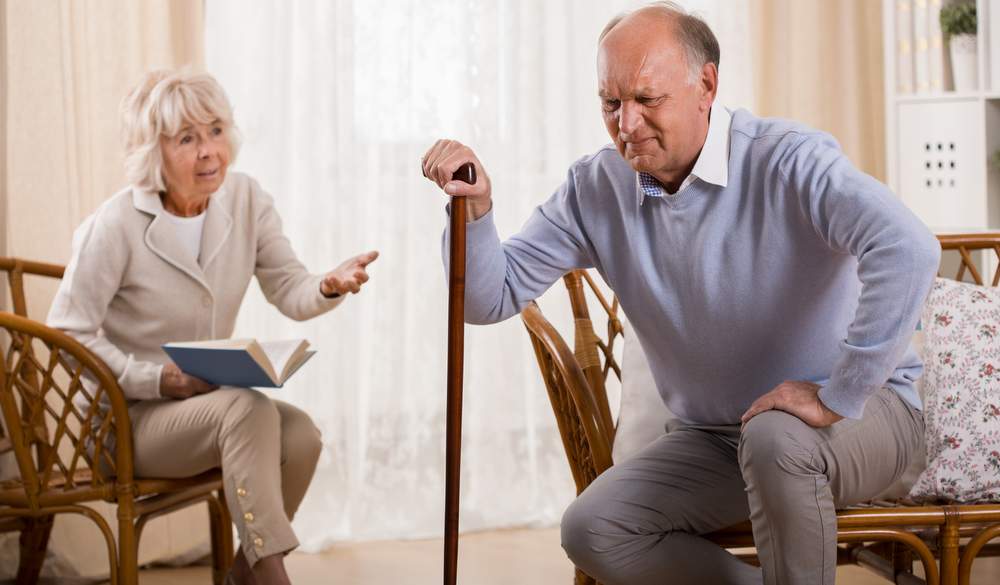 We can now provide seniors with PRP and stem cell injections into the spine and extremities, saving them the painful necessity for surgical intervention.
We can now provide seniors with PRP and stem cell injections into the spine and extremities, saving them the painful necessity for surgical intervention.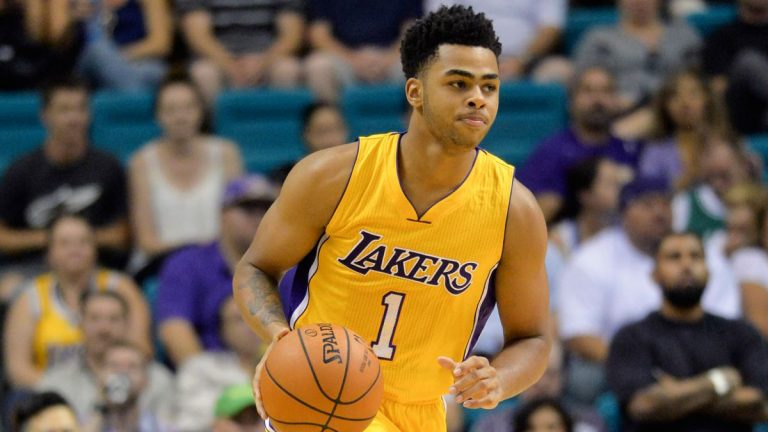 Lakers point guard D’Angelo Russell will miss 2 weeks after receiving a platelet rich plasma injection to his knee. USA Today reports that Russell has missed two of the Laker’s last three games with soreness in his left knee, but the second year point guard had thought it wasn’t a serious injury.
Lakers point guard D’Angelo Russell will miss 2 weeks after receiving a platelet rich plasma injection to his knee. USA Today reports that Russell has missed two of the Laker’s last three games with soreness in his left knee, but the second year point guard had thought it wasn’t a serious injury.